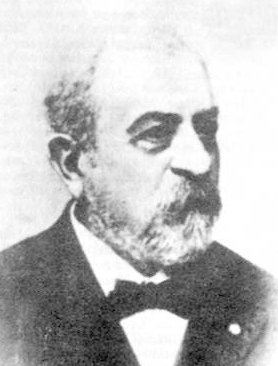Teodor Burada on:
[Wikipedia]
[Google]
[Amazon]
 Teodor T. Burada (3 October 1839 – 17 February 1923) was a
Teodor T. Burada (3 October 1839 – 17 February 1923) was a
 Teodor T. Burada (3 October 1839 – 17 February 1923) was a
Teodor T. Burada (3 October 1839 – 17 February 1923) was a Romania
Romania ( ; ro, România ) is a country located at the crossroads of Central Europe, Central, Eastern Europe, Eastern, and Southeast Europe, Southeastern Europe. It borders Bulgaria to the south, Ukraine to the north, Hungary to the west, S ...
n folklorist
Folklore studies, less often known as folkloristics, and occasionally tradition studies or folk life studies in the United Kingdom, is the branch of anthropology devoted to the study of folklore. This term, along with its synonyms, gained currenc ...
, ethnographer
Ethnography (from Greek ''ethnos'' "folk, people, nation" and ''grapho'' "I write") is a branch of anthropology and the systematic study of individual cultures. Ethnography explores cultural phenomena from the point of view of the subject o ...
and musicologist
Musicology (from Greek μουσική ''mousikē'' 'music' and -λογια ''-logia'', 'domain of study') is the scholarly analysis and research-based study of music. Musicology departments traditionally belong to the humanities, although some mu ...
and member of the Romanian Academy (elected in 1878, the first musician to achieve this position).
In 1884 he unearthed fragments of pottery and terracotta figurines near the village of Cucuteni
Cucuteni () is a commune in Iași County, Western Moldavia, Romania, with a population of 1,446 as of 2002. The commune is composed of four villages: Băiceni, Bărbătești, Cucuteni, and Săcărești.
It is located from the city of Iași an ...
, Iași County
Iași County () is a county (județ) of Romania, in Western Moldavia, with the administrative seat at Iași. It is the most populous county in Romania, after the Municipality of Bucharest (which has the same administrative level as that of a coun ...
, which led to the discovery of the Cucuteni-Trypillian culture, a major Neolithic
The Neolithic period, or New Stone Age, is an Old World archaeological period and the final division of the Stone Age. It saw the Neolithic Revolution, a wide-ranging set of developments that appear to have arisen independently in several parts ...
archaeological culture
An archaeological culture is a recurring assemblage of types of artifacts, buildings and monuments from a specific period and region that may constitute the material culture remains of a particular past human society. The connection between thes ...
.
Burada played the violin, studying at Iași
Iași ( , , ; also known by other alternative names), also referred to mostly historically as Jassy ( , ), is the second largest city in Romania and the seat of Iași County. Located in the historical region of Moldavia, it has traditionally ...
Conservatory (1855–1860) and the Paris Conservatory
The Conservatoire de Paris (), also known as the Paris Conservatory, is a college of music and dance founded in 1795. Officially known as the Conservatoire National Supérieur de Musique et de Danse de Paris (CNSMDP), it is situated in the avenue ...
(1861–1865). He traveled widely in Eastern Europe on concert tours, and took the opportunity in his travels to collect folklore material, especially among Romanian communities. His publications include material on music education and many other musical topics. He was the editor of ''Dicţionar muzical'' (c. 1862–75), the earliest Romanian dictionary of music.
References
Corresponding members of the Romanian Academy 1839 births 1923 deaths {{Romania-academic-bio-stub